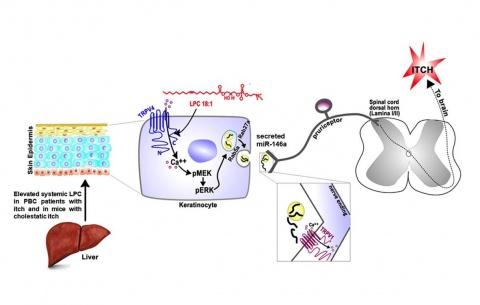
A devastating itching of the skin driven by severe liver disease turns out to have a surprising cause. Its discovery points toward possible new therapies for itching, and shows that the outer layer of the skin is so much more than insulation. The finding, which appears April 2 in Gastroenterology, indicates that the keratinocyte cells of the skin surface are acting as what lead researcher Wolfgang Liedtke, MD PhD, calls ‘pre-neurons.’
“The skin cells themselves are sensory under certain conditions, specifically the outermost layer of cells, the keratinocytes,” said Liedtke, who is a professor of neurology at Duke School of Medicine.
This study on liver disease itching, done with colleagues in Mexico, Poland, Germany, and Wake Forest University, is a continuation of Liedtke’s pursuit of understanding a calcium-permeable ion channel on the cell surface called TRPV4, which he discovered 20 years ago at Rockefeller University. The TRPV4 channel plays a crucial role in many tissues, including the sensation of pain. It was known to exist in skin cells, but nobody knew why.
“The initial ideas were that it plays a role in how the skin is layered, and in skin barrier function,” Liedtke said. “But this current research is getting us into a more exciting territory of the skin actually moonlighting as a sensory organ.” Once a chemical signal of itching is received, keratinocytes relay the signal to nerve endings in the skin that belong to itch-sensing nerve cells in the dorsal root ganglion next to the spine.
"Dr. Liedtke and I had a longstanding interest in the role of TRPV4 in the skin, based on our previous collaborations we decided to focus on chronic itch," said Yong Chen, PhD, an assistant professor of neurology at Duke who is first author on the study.